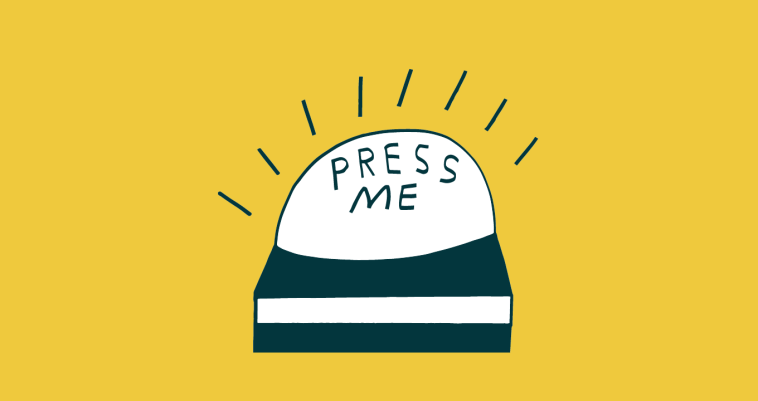Introduction.
Affiliate marketing is one of the most accessible ways to start making money online, but success in it often comes down to one thing: having a solid email list.
An email list isn’t just a random collection of emails you’ve gathered—it’s a powerful tool for connecting with potential customers and making sales.
With email marketing offering an average return on investment (ROI) of around $36 for every $1 spent, it’s clear why building an email list can make a real difference in your affiliate marketing efforts.
So, why does this matter? Building an email list gives you a direct line to people who’ve already shown interest in what you’re promoting.
Unlike social media, where algorithms can limit who sees your posts, emails land straight in people’s inboxes, where they’re more likely to see and engage with them.
And when you’re in affiliate marketing, engaging with people who already trust you and want to hear from you is half the battle.
This guide will walk through practical ways to build your email list, whether you’re just starting or want to grow an existing one.
I’ll cover some of the easiest, most effective ways to attract subscribers, plus a few strategies to avoid so you can avoid common pitfalls.
Why Build an Email List for Affiliate Marketing?
- Direct Access to Subscribers: With an email list, you control who sees your content—no need to rely on search engines or social media algorithms.
- Higher Conversion Rates: Email marketing typically has higher conversion rates than other forms of marketing, meaning you’re more likely to make sales from an email campaign.
- Building Trust: Email lists are a great way to build trust with your audience over time, turning casual followers into loyal customers.
- Targeted Marketing: An email list can help you segment your audience and create targeted campaigns, leading to better engagement and higher affiliate revenue.
How Do I Build an Email List For Affiliate Marketing?
Let’s dive into the key steps you’ll want to take when building an email list specifically for affiliate marketing:
1. Choose the Right Email Marketing Platform.
There are tons of email marketing platforms out there—Mailchimp, ConvertKit, AWeber, and others. When picking one, think about factors like cost, ease of use, and features like automation, segmentation, and analytics.
2. Create a Lead Magnet That Offers Real Value.
A lead magnet is an incentive you give to people in exchange for their email address. For affiliate marketers, a good lead magnet might be:
- A free e-book on a topic related to the products you promote
- An exclusive discount code for an affiliate product
- Access to a “how-to” video or mini-course on using a product
A solid lead magnet can attract subscribers because it offers immediate value, showing people you care about helping them—not just about making a sale.
3. Build a Landing Page and Signup Forms.
A landing page with a strong call-to-action (CTA) is where people will sign up for your email list. Use clear, concise language, and focus on benefits over features. Good signup forms should be strategically placed:
- On your homepage
- In blog posts related to your lead magnet topic
- In pop-ups or slide-ins (but make sure they’re easy to close so they’re not annoying!)
4. Use Social Media to Drive Traffic.
Social media is a great way to get your email list in front of people. Here’s how:
- Promote your lead magnet on your social profiles.
- Share testimonials or success stories from people who have benefited from your emails.
- Consider running ads, especially if you’ve noticed strong engagement on specific platforms.
5. Optimize Your Content for Search Engines (SEO).
SEO can help you get in front of people actively looking for what you offer. When your blog posts rank well in search results, you get organic traffic, and more traffic means more potential subscribers.
Use keywords that relate to your niche, and place an email signup box within or at the end of relevant blog posts. This way, people interested in the content can easily sign up to receive more.
6. Run Giveaways or Contests
Giveaways can attract a large number of subscribers quickly, but quality is key. Make sure the prize is something relevant to your affiliate products so that you’re attracting people who are likely to be interested in your content and recommendations. For example, if you promote health and fitness products, a free one-month fitness program or a gift card to a fitness store could be a good prize.
7. Nurture Your List with Quality Content
Once people subscribe, it’s essential to keep them engaged so they don’t lose interest or unsubscribe. Send a variety of content:
- Helpful guides and tips related to your niche
- Product reviews that genuinely help subscribers make informed decisions
- Exclusive deals or early access to products they’ll love
Pros and Cons of Building an Email List for Affiliate Marketing
Pros:
- Control: Unlike social media, email marketing gives you full control over your message delivery.
- Higher Conversions: Subscribers are more likely to buy from you because they’ve opted in to receive information.
- Long-Term Relationships: Email lists can be nurtured over time, leading to lasting trust and higher lifetime value.
Cons:
- Time-Consuming: Building a list from scratch can take time, especially if you want a high-quality list.
- Email Fatigue: Some people may unsubscribe if they feel bombarded with promotions or repetitive content.
- Potential Costs: While some email platforms offer free plans, advanced features that benefit affiliate marketing often come with a cost.
FAQs
1. How often should I email my subscribers?
It varies, but a good rule is once a week. Test what works best for your audience, and avoid overloading their inbox.
2. Can I buy an email list?
It’s not recommended. Buying an email list often results in low-quality leads, higher unsubscribe rates, and potential spam complaints. Organic growth is best.
3. What should I write in my emails?
Mix it up with helpful content, product recommendations, and personal insights. Your goal is to add value, not just push products.
4. How do I avoid ending up in spam folders?
Use double opt-in to ensure your subscribers genuinely want your emails, and avoid spammy language. Also, regularly clean your list by removing inactive subscribers.
5. Is it okay to use affiliate links directly in my emails?
Some platforms have strict rules about affiliate links, so check their policies. Alternatively, link to a landing page or blog post with your affiliate links if direct linking is an issue.
Conclusion
Building an email list for affiliate marketing can be incredibly rewarding, providing you with a loyal audience genuinely interested in what you have to offer.
It takes time, planning, and patience, but the results—a solid subscriber base, higher conversion rates, and greater potential for recurring revenue—are worth it.
What strategies are you excited to try for growing your email list, or is there something holding you back? Let’s continue the conversation.




GIPHY App Key not set. Please check settings